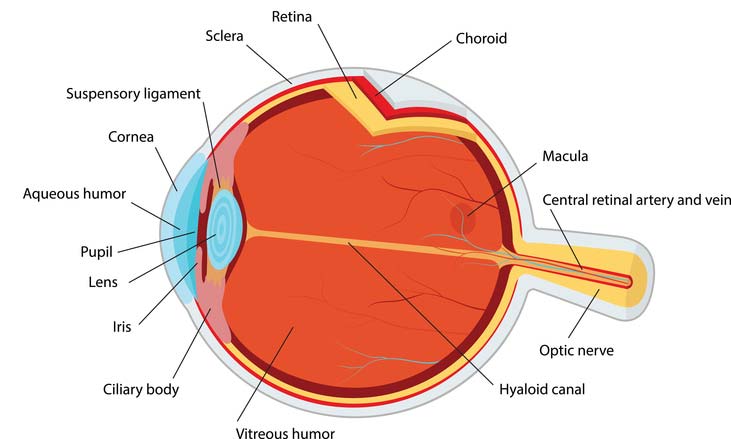Explosion Injuries
Below are some explosion injuries that our lawyers investigate in the course of securing justice and compensation for our clients.
Burn Injuries
Burns are among the most devastating injuries one can suffer, resulting from violent exposure to heat (thermal burns), chemicals (chemical burns), or electricity.
Deep second- and third-degree burns may lead to months of hospitalization and rehabilitation, requiring a painful process of debridement (where surgeons cut out the damaged tissue) and surgical reconstruction with skin grafts. Continuing treatment may be required for scarring, psychological complications, skin breakdown, infections, and delayed wound healing or skin graft failure.
Layers of the Skin

Crush Injuries
Most people associate burn injuries with explosions, but these violent events can cause serious crush injuries, too:
Crush Injury: The American College of Emergency Physicians defines a crush injury as “compression of extremities or other parts of the body that causes muscle swelling and/or neurological disturbances in the affected areas.” Seventy-four percent of these injuries involve the lower extremities; 10% affect the upper extremities, and 9% involve the trunk of the body.
Crush Syndrome: Crush syndrome is also known as traumatic rhabdomyolysis, or Bywater’s Syndrome. Decreased oxygen levels in crushed muscles cause the release of oxygen-carrying proteins and electrolytes. When the crushed or trapped body part is freed, these compounds suddenly re-enter the bloodstream, where they can trigger a heart attack or kidney failure. About 2% to 15% of crush injury patients experience crush syndrome.
Compartment Syndrome: The third type of crush injury is called Compartment Syndrome. A “compartment” is a group of nerves, muscles, and blood vessels in the arms and legs that are surrounded by a non-expanding tissue that keeps these body components in place. When an injury causes swelling and bleeding in this compartment, pressure builds up and restricts blood flow. These types of injuries demand immediate emergency care and usually require surgery. Areas of the body affected by compartment syndrome may need to be amputated.
Lung Injuries
There are several types of lung injuries that are caused by explosions. These injuries can be life-altering, resulting in the permanent, distressing inability to breathe properly.
Primary Explosion Injury / Blast Lung: The initial blast wave can cause ‘blast lung,’ which is the most common cause of death and injury from explosions. In an explosion, the explosive material turns into highly pressurized gas. This releases energy at supersonic speeds from the center of the explosion. The wave only lasts for milliseconds, but it does serious damage to structures and to people. The blast wave creates intense pressure on the body, and can tear or burst the lung, or cause hemorrhage (heavy bleeding), contusion, or edema (tissue swelling).
Secondary Explosion Injury / Penetrating Lung Injury: Secondary injuries are caused by flying debris, which hits the person with great force. If the lung itself is penetrated, emergency surgery is required, or else the patient may bleed or suffocate to death. Debris can also cause lacerations in the bronchial tubes, making it difficult to breathe. These injuries are similar to those seen in war situations.
Tertiary Explosion Injury: Tertiary injuries are caused by a person being thrown through the air and hitting a hard surface. They include blunt chest trauma and acute inhalation injury.
Lung Injury Complications: Even if your lungs heal completely after an injury, permanent scar tissue may develop, making it hard to breathe. Lung injuries can also cause an embolism, which means air has gotten into the blood vessels. This can cause immediate death when the air bubble reaches the heart, lungs, or brain.
Smoke Inhalation
Smoke inhalation is the leading cause of death in house and explosion fires, causing about 50% of deaths in these situations. Particulate matter in smoke can cause oxygen deprivation, heart attacks, and respiratory failure. When the lungs are irritated with particles, an inflammatory response similar to asthma can occur. Particles can also block the airways and cause suffocation.
But smoke inhalation can also cause serious non-fatal injuries that have lifelong adverse health effects. And some of these injuries may not be noticed until 24 to 36 hours after the event.
Heart Injury
Anyone who has been caught in an explosion has suffered serious injuries and damage to their bodies. Most people think of burns and traumatic shock injuries after these events. But did you know that the blast wave of an explosion can cause lasting heart damage?
When the blast wave from an explosion causes blunt force trauma to the chest, this compression can lead to:
- Cardiac contusion, or bruising of the heart muscle;
- Heart attacks from air bubbles, or embolisms, that are forced into damaged arteries and veins;
- Shock, which can cause a sudden drop of blood flow and can be life-threatening;
- Hypotension, or reduced blood pressure, which can affect all of the organs in the body;
- Hematomas, or excess blood in tissue, which can be caused by the force of the blast;
- Cardiac tamponade, a very serious injury which is fluid in the pericardium, the membrane surrounding the heart.
Head Trauma (Traumatic Brain Injury)
According to the Centers for Disease Control (CDC), the brain injuries caused by an explosive blast are usually more complex than the typical head trauma caused by events such as a car crash or sports injury. Complications include edema (brain swelling), concussion, contusions, hematomas (blood clots), brain hemorrhage, diffuse axonal injury (DAI – blood vessel lesions in the brain’s white matter), and tissue hypoxia.
Brain Injury Complications: Long-term complications include brain damage, depression, post-traumatic stress disorder (PTSD), behavioral problems, personality changes, and Chronic Traumatic Encephalopathy (CTE) – a degenerative condition where the brain cells are slowly killed over time. (Source: concussionfoundation.org).
Eye Injuries

Eye injuries are painful and can be quite serious, leading to partial or full blindness. The loss of vision is both traumatic and life-altering. While this type of trauma usually occurs in military combat zones, it also occurs in explosion accidents. The blast wave of an explosion can cause:
- Cataracts: a clouding of the eye’s natural lens, which lies behind the iris and the pupil.
- Conjunctival lacerations: a cut in the membrane that covers the eye and lines the insides of the eyelids.
- Berlin’s edema (commotio retinae): a condition that makes the retina look white and opaque. This causes decreased vision hours after the initial injury.
- Conjunctival hemorrhage: a broken blood vessel in the tissue covering the white of the eye.
- Orbital bone fracture: a break in the bony cup that surrounds and protects the eye.
- Hyphema: a painful pooling of blood in the space between the cornea and the iris, blocking vision.
- Ruptured globes: caused by blunt or penetrating trauma, this condition is associated with vision loss and is a medical emergency.
- Serous retinopathy: detachment of the retina when fluid builds up under the tissue that lines the back of the eye.
- Vitreous hemorrhage: a leakage of blood into the areas in and around the clear gel that fills the space between the retina and lens, leading to acute vision loss.
- Traumatic optic neuropathy: this occurs when an acute injury to the optic nerve results in vision loss.
- Secondary Eye Injuries: these include penetrations caused by flying debris and ocular burns.
- Eye Injury Complications: Changes in the eye from the initial injury can lead to glaucoma in the years to come; other conditions can appear months or years later.
Eardrum Rupture Injury
People may think that eardrum injuries are less serious than most injuries an explosion can cause, but that’s not true. Severe eardrum injuries can lead to death.
The blast wave of an explosion can rupture or destroy the tympanic membrane in the eardrum, causing a hole or tear. This injury not only causes hearing loss, but it can let bacteria, water, and other debris into the middle ear, leading to infection. The blast may also disrupt the ossicular chain (the bones in the middle ear), requiring surgery to replace shattered bones.
Another complication of an eardrum rupture is called cholesteatoma, a cyst or growth in the ear that can erode skull bones, eventually causing paralysis of facial muscles and the eyes, meningitis (inflammation of the spinal cord and brain), or death.
Complications of ear surgery can include damage to facial nerves, loss of nerves that control the sense of taste, and hearing loss.
What Can You Do?
Medical expenses after these injuries can run into the millions of dollars, and aftercare may be needed for a lifetime. Later complications may require continuing medical intervention, including surgery, other invasive treatments, rehabilitation, and supportive care.
Your injury may mean that you can’t return to the job you had before the explosion – you may be completely disabled, unable to work at all. If partially disabled, you may have to find a different, possibly less lucrative job that will allow you to continue to support yourself and your family.
If a company’s actions or carelessness caused these injuries, the pain is complicated by the outrage of injustice.
Our attorneys understand all of these repercussions. We also know that the compensation you are entitled to receive should reflect these factors.
It’s important to contact an attorney as soon as possible after your injury. Corporations have attorneys and insurance companies working to protect them. They may ask you to sign papers that may void your legal rights. You deserve legal protection, too. Call an attorney before you sign anything or speak to any company representative.
What Can We Do for You?
If you or a loved one has suffered one or more of these injuries after an explosion, our lawyers can help protect your legal rights. We have won multimillion-dollar settlements for people who were injured in pipeline explosions, house explosions, construction accidents, and propane tank explosions.
We are dedicated to making sure that your legal rights are protected after a burn or explosion injury. We care about our clients and will travel to see them in the hospital or at home, anywhere in the country, to start the healing process.
When you hire us, we will:
- Start an immediate investigation of the explosion and try to determine liability and if breach of duty occurred (link);
- Examine the site where the injury was sustained;
- Interview you and / or your family members;
- Look at company records, police, and fire reports; and
- Source, contact, and interview witnesses.
Often, our experienced investigators will find something that officials overlook. We are looking for evidence that will help prove your case.
You have enough to worry about, just recovering and trying to piece your life back together. Let us help you through the red tape, the forms to fill out, and insurance requirements. Call us at 1-888-377-8900 or fill out our online consultation form; one of our lawyers will be in contact soon. This call is free, confidential, and without obligation. We do not collect a fee until and unless we collect money for you.


